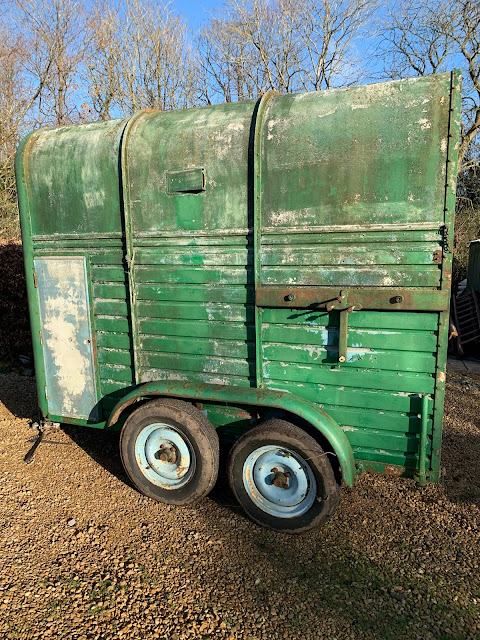
Someone once said to me on discovering my interest in gardening, that they didn't think that I would have been "that much of a control freak". Now no one, of course, likes to think of themselves as any kind of control freak, but I can kind of see where he was going. A certain amount of interfering with and organizing of, Mother Nature's bounty is what it's all about. Leaving it entirely to nature only really works if you live in the Amazon Basin; if I left my greenhouse to nature for a couple of weeks it would in fact resemble the Amazon Basin, and I wouldn't be able to get in the door. Indeed I often can't. So there has to be a certain amount of "ordering nature" going on in all gardening to make it work. Or as a cleaning lady I once had, used to put it "Making order out of chaos dear", (what could she have meant?).
Certainly serried ranks of tulips have faded from fashion in suburban gardens, and with council bedding schemes becoming as rare as hens teeth, cheaper and more natural looking prairie style planting is springing up on roundabouts the length of the country. There's been quite a fashion for gardening "au naturel" in recent years, and I don't just mean that naturist couple who garden in Malmesbury in the altogether. Of course, gardeners have always looked to acheive a "natural" appearance in their schemes - hiding supports under the flowers and foliage and so on. But we all know really that it's complete nonsense, and that looking natural has nothing at all to do with how the garden would look if you really did leave it to nature. But wildflower meadows, ornamental grasses, natural ponds are the effects for which we all must now strive if we are to keep pace with modern horticultural trends.
I I have to confess I can't seem to get to grips with ornamental grasses very much really, I think they know I don't like them much, and so they don't do well for me, - you can only grow what you like the look of, as indeed you can only successfully cook what you enjoy eating, but I have made a small experiment with a wildflower patch, and it has been sufficiently successful to encourage me to expand the idea for next year.
I used a packet of wildflower seed, although most of what came up was the pretty yellow Corn Marigold, which used to be a ubiquitous weed of cornfields before industrial farming did for it (and many other once common but now rare and endangered wild flowers).
Anyway it has spread its grey-green foliage and bright yellow flowers around enthusiastically, almost as though it can't quite believe no one has come along in a tractor and sprayed it from a great height with Glyphosate, and in company with some red field poppies, the odd bright blue cornflower and a bit of white chamomile has made a tiny "natural" patchwork of the kind you would never ordinarily plant in your border, but which has a charm all of its own. It's also good for the bees, which is always a consideration in my garden. So I've been collecting the seed from the very many seedheads, and am hoping to expand the planting area next summer into a Monet-esque cornfield ( what do you mean ambitious..?) but without the corn of course. Come to think of it, the corn might actually come in handy for the chickens...Hmm.. Anyway it's a sloping area under trees which currently supports a good display of daffodils in the spring, but not much else, so I'm hoping this plan will fit in with the early bulbs and provide a continuity of flowers through the summer and autumn.
I used a packet of wildflower seed, although most of what came up was the pretty yellow Corn Marigold, which used to be a ubiquitous weed of cornfields before industrial farming did for it (and many other once common but now rare and endangered wild flowers).
Anyway it has spread its grey-green foliage and bright yellow flowers around enthusiastically, almost as though it can't quite believe no one has come along in a tractor and sprayed it from a great height with Glyphosate, and in company with some red field poppies, the odd bright blue cornflower and a bit of white chamomile has made a tiny "natural" patchwork of the kind you would never ordinarily plant in your border, but which has a charm all of its own. It's also good for the bees, which is always a consideration in my garden. So I've been collecting the seed from the very many seedheads, and am hoping to expand the planting area next summer into a Monet-esque cornfield ( what do you mean ambitious..?) but without the corn of course. Come to think of it, the corn might actually come in handy for the chickens...Hmm.. Anyway it's a sloping area under trees which currently supports a good display of daffodils in the spring, but not much else, so I'm hoping this plan will fit in with the early bulbs and provide a continuity of flowers through the summer and autumn.








